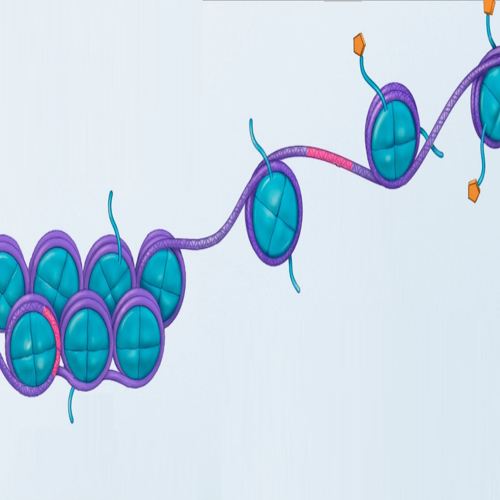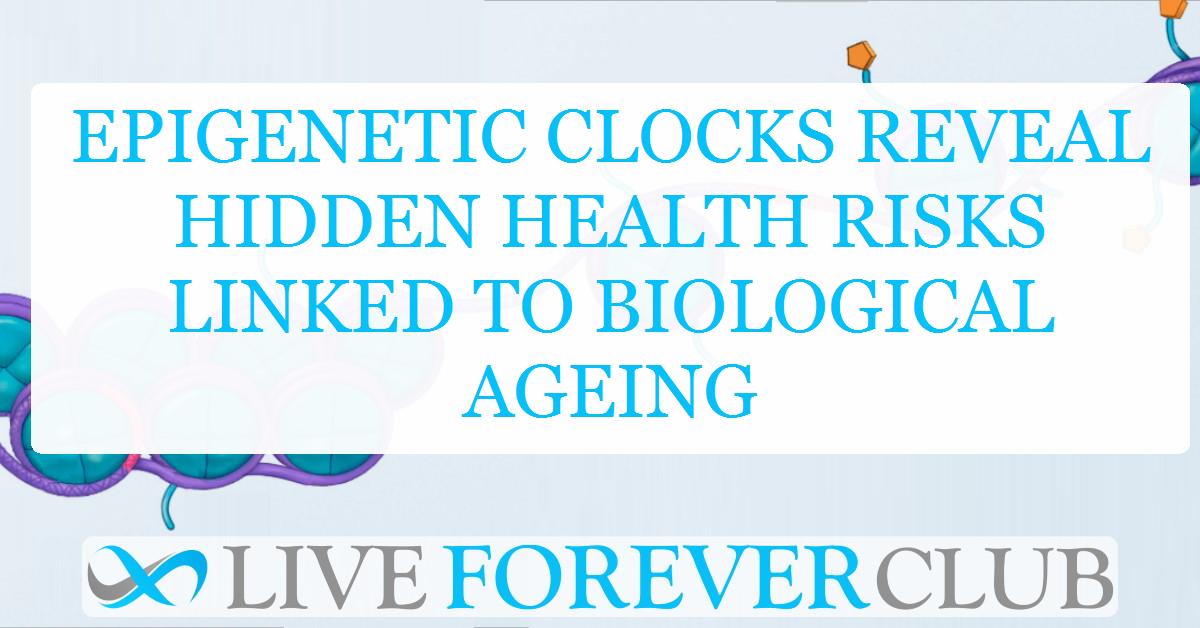As humans age, understanding the biological markers that can predict health outcomes becomes crucial. Biological ageing varies significantly between individuals, even those of the same chronological age, driven by genetic, environmental, and lifestyle factors.
One of the most promising ways to measure biological ageing is through epigenetics, a field that studies changes in gene expression without altering the underlying DNA sequence. Epigenetic age acceleration, which measures how fast an individual ages biologically, offers a new tool for predicting mortality risk.
What is Epigenetic Ageing?
Epigenetic ageing refers to the biological process by which cells undergo changes in gene expression as they age. These changes often manifest through DNA methylation, a process where methyl groups are added to specific DNA regions, influencing how genes are expressed. DNA methylation is one of the most stable and quantifiable epigenetic markers, and its changes have been linked to ageing and age-related diseases.
The concept of epigenetic clocks was first introduced by researchers who sought to measure biological age based on DNA methylation patterns. These clocks analyse specific sites in the genome, known as CpG sites, where methylation occurs. By examining these patterns, scientists can estimate an individual's biological age, which may differ from their chronological age. Epigenetic age acceleration occurs when a person's biological age is older than expected for their chronological age, suggesting they are ageing faster.
Several epigenetic clocks have been developed over the years, each using different sets of CpG sites and mathematical algorithms. The first generation of clocks, such as the Horvath and Hannum clocks, aimed to predict chronological age based on DNA methylation patterns. Later generations, like PhenoAge and GrimAge, incorporated additional biomarkers related to health and mortality, making them more accurate predictors of overall health and mortality risks.
Study Overview
The study analysed data from the National Health and Nutrition Examination Survey (NHANES), which collects health and nutritional information from a nationally representative sample of U.S. adults. The researchers focused on 2,105 participants aged 50 and older, who were followed for up to 20 years to assess their mortality outcomes. The goal was to determine whether epigenetic age acceleration, as measured by various epigenetic clocks, could predict overall, cardiovascular, and cancer mortality in this population.
The epigenetic clocks used in the study included well-known clocks such as Horvath, Hannum, and GrimAge, as well as newer models like PhenoAge, SkinBlood, and DunedinPoAm. By analysing these clocks, the researchers aimed to identify which ones were the most effective in predicting mortality risks.
Research Methods
To assess the participants' epigenetic age, DNA was extracted from their blood samples and analysed using the Illumina Infinium Methylation assay, which measures DNA methylation across the genome. The researchers then calculated epigenetic age acceleration by comparing the participants' biological age, as estimated by the epigenetic clocks, with their chronological age.
The researchers used a statistical method known as Cox proportional hazards regression to estimate the relationship between epigenetic age acceleration and mortality risk. This method allowed them to calculate hazard ratios (HR) and 95% confidence intervals (CI) for overall, cardiovascular, and cancer mortality. The models were adjusted for several factors, including age, body mass index (BMI), smoking status, physical activity, and white blood cell composition.
Key Findings
The study found that several epigenetic clocks, including GrimAge, Hannum, and PhenoAge, were strong predictors of overall mortality. Among these, GrimAge was the most powerful predictor of both overall and cardiovascular mortality. The hazard ratio for overall mortality associated with a five-year increase in GrimAge was 1.50, meaning that individuals with higher GrimAge scores were 50% more likely to die during the follow-up period.
GrimAge also stood out as the only clock that predicted cardiovascular mortality, with a hazard ratio of 1.55. This suggests that GrimAge captures biological changes related to heart health, making it a valuable tool for predicting cardiovascular outcomes.
For cancer mortality, the study found that Horvath, Hannum, and GrimAge were significant predictors. The hazard ratios for these clocks ranged from 1.17 to 1.37, indicating that individuals with accelerated epigenetic ageing were more likely to die from cancer.
Interestingly, the DunedinPoAm clock, which measures the pace of biological ageing, was associated with overall and cardiovascular mortality but not cancer mortality. This finding highlights the importance of measuring not only biological age but also the rate at which individuals are ageing.
Why Do Some Epigenetic Clocks Perform Better?
The differences in the predictive power of various epigenetic clocks can be attributed to several factors. First, the CpG sites used in each clock vary, which affects their ability to capture different aspects of biological ageing. For example, GrimAge includes markers related to smoking and other health-related factors, making it particularly effective at predicting cardiovascular outcomes.
Additionally, the training datasets used to develop these clocks differ, influencing their performance in predicting mortality. GrimAge was designed specifically to predict mortality and includes biomarkers that are directly related to health outcomes, such as proteins and hormones. In contrast, older clocks like Horvath and Hannum were primarily developed to predict chronological age and may not capture all the relevant health markers.
Finally, the statistical methods used to develop these clocks can also affect their performance. GrimAge, for example, was built using advanced machine learning techniques that allow it to incorporate a wide range of health-related variables, making it more accurate in predicting mortality.
Understanding the Hazard Ratio (HR)
The hazard ratio (HR) is a key measure used in survival analysis to compare the likelihood of an event (in this case, death) occurring between different groups. In the context of this study, HRs were used to quantify how much an increase in epigenetic age acceleration raises the risk of mortality.
For instance, an HR of 1.50 for GrimAge and overall mortality means that for every five-year increase in epigenetic age acceleration according to the GrimAge clock, the risk of death increases by 50%. Similarly, an HR of 1.55 for cardiovascular mortality means a 55% increased risk for those with higher GrimAge acceleration.
These HRs provide important context for understanding how biological ageing influences health outcomes. The stronger the HR, the more predictive the epigenetic clock is for that specific outcome. In this study, the GrimAge clock consistently showed the highest HRs, highlighting its predictive accuracy.
Mortality Risk and Epigenetic Ageing
The study offers crucial insights into the association between epigenetic age acceleration (EAA) and mortality, emphasising the role of epigenetic clocks in predicting health outcomes. The researchers found that individuals with higher EAA, as measured by clocks like GrimAge, Hannum, and Horvath, were at a significantly increased risk of overall mortality. This indicates that accelerated biological ageing, as captured by DNA methylation patterns, is strongly linked to earlier death.
GrimAge, in particular, stood out as the most robust predictor of cardiovascular mortality. The hazard ratio (HR) of 1.55 for cardiovascular deaths linked to GrimAge suggests that individuals with accelerated ageing according to this clock face a 55% higher risk of cardiovascular-related death. This finding aligns with previous research that has identified GrimAge as a powerful predictor of heart disease due to its inclusion of specific biomarkers like smoking pack-years and plasma proteins linked to cardiovascular health.
In contrast, cancer mortality was better predicted by Horvath and Hannum clocks, with HRs of 1.18 and 1.24, respectively. This difference in predictive power may be due to the distinct sets of CpG sites used by these clocks, which could be more sensitive to the biological changes associated with cancer development.
The DunedinPoAm clock, which measures the pace of biological ageing rather than epigenetic age per se, was also linked to overall and cardiovascular mortality. However, it did not predict cancer mortality. This suggests that the pace at which individuals biologically age may be more relevant to cardiovascular outcomes than to cancer.
Limitations and Strengths of the Study
As with any research, there are limitations to this study. One notable limitation is that the epigenetic age acceleration was measured at a single time point. This means that changes in EAA over time were not captured, which could affect the accuracy of the predictions. Longitudinal studies that track EAA at multiple points in time would provide a more comprehensive view of how biological ageing progresses and its impact on mortality.
Additionally, the study did not include detailed data on the incidence of specific diseases, such as different types of cancer. This limits the ability to assess the relationship between EAA and specific cancer types. Future research could address this gap by examining the links between epigenetic ageing and specific disease outcomes.
Another limitation is the use of self-reported data for some variables, such as smoking and physical activity. While the study adjusted for these factors, self-reported data can be subject to bias, which may influence the results.
Despite these limitations, the study has several strengths. The use of a nationally representative sample from the NHANES dataset increases the generalisability of the findings to the broader U.S. population. The large sample size and long follow-up period (up to 20 years) also strengthen the study's conclusions.
Furthermore, the use of multiple epigenetic clocks, including both first-generation and newer models, provides a comprehensive analysis of how different clocks perform in predicting mortality. The inclusion of advanced clocks like GrimAge, which incorporate health-related biomarkers, enhances the accuracy of the predictions.
Implications for Public Health
The findings from this study have significant implications for public health. Epigenetic clocks offer a promising tool for predicting mortality and identifying individuals at higher risk of death from cardiovascular diseases, cancer, and other causes. By measuring biological ageing, these clocks could inform personalised health strategies aimed at improving longevity and reducing the risk of age-related diseases.
For example, individuals with accelerated epigenetic ageing may benefit from targeted interventions to address specific health risks, such as smoking cessation programs, cardiovascular health monitoring, or cancer screenings. By identifying those at highest risk, healthcare providers can offer more personalised and proactive care.
The study also highlights the potential for epigenetic research to inform public health policies. As our understanding of biological ageing improves, policymakers could use epigenetic data to guide health initiatives aimed at reducing mortality and improving population health. For instance, public health campaigns could focus on lifestyle factors that contribute to accelerated ageing, such as smoking, poor diet, and lack of physical activity.
Future Research Directions
While this study provides important insights into the relationship between epigenetic age acceleration and mortality, there is still much to learn. Future research should focus on several key areas to expand our understanding of how biological ageing influences health outcomes.
First, longitudinal studies are needed to track changes in epigenetic age acceleration over time. By examining how EAA evolves as individuals age, researchers can gain a better understanding of the long-term effects of biological ageing on mortality risk. These studies could also help identify potential interventions to slow down the biological ageing process.
Second, more research is needed to explore the relationship between EAA and specific diseases. While this study examined overall mortality, cardiovascular mortality, and cancer mortality, future studies could delve into the links between epigenetic ageing and other age-related diseases, such as neurodegenerative disorders, diabetes, and chronic respiratory diseases.
Finally, researchers should investigate how lifestyle interventions, such as diet, exercise, and stress reduction, impact epigenetic age acceleration. By identifying the factors that influence biological ageing, we can develop more effective strategies for promoting healthy ageing and reducing mortality risk.
Conclusion
Epigenetic age acceleration is emerging as a powerful tool for predicting mortality and understanding the biological processes underlying ageing. The study by Angelico Mendy and Tesfaye B. Mersha provides compelling evidence that epigenetic clocks, particularly GrimAge, are strong predictors of overall and cause-specific mortality in U.S. adults.
By measuring DNA methylation patterns, these clocks offer valuable insights into how fast individuals are ageing biologically and their associated health risks. As research in this field continues to evolve, epigenetic clocks could become an integral part of personalized healthcare, helping individuals and healthcare providers make informed decisions about health interventions and preventive care.
In conclusion, the growing body of research on epigenetic ageing underscores the importance of biological age as a predictor of health outcomes. With continued advancements in epigenetic research, we may one day be able to slow down the biological ageing process, extend life expectancy, and improve the quality of life for millions
The study is published in the BioRxiv. It was led by Tesfaye B. Mersha from University of Cincinnati.







